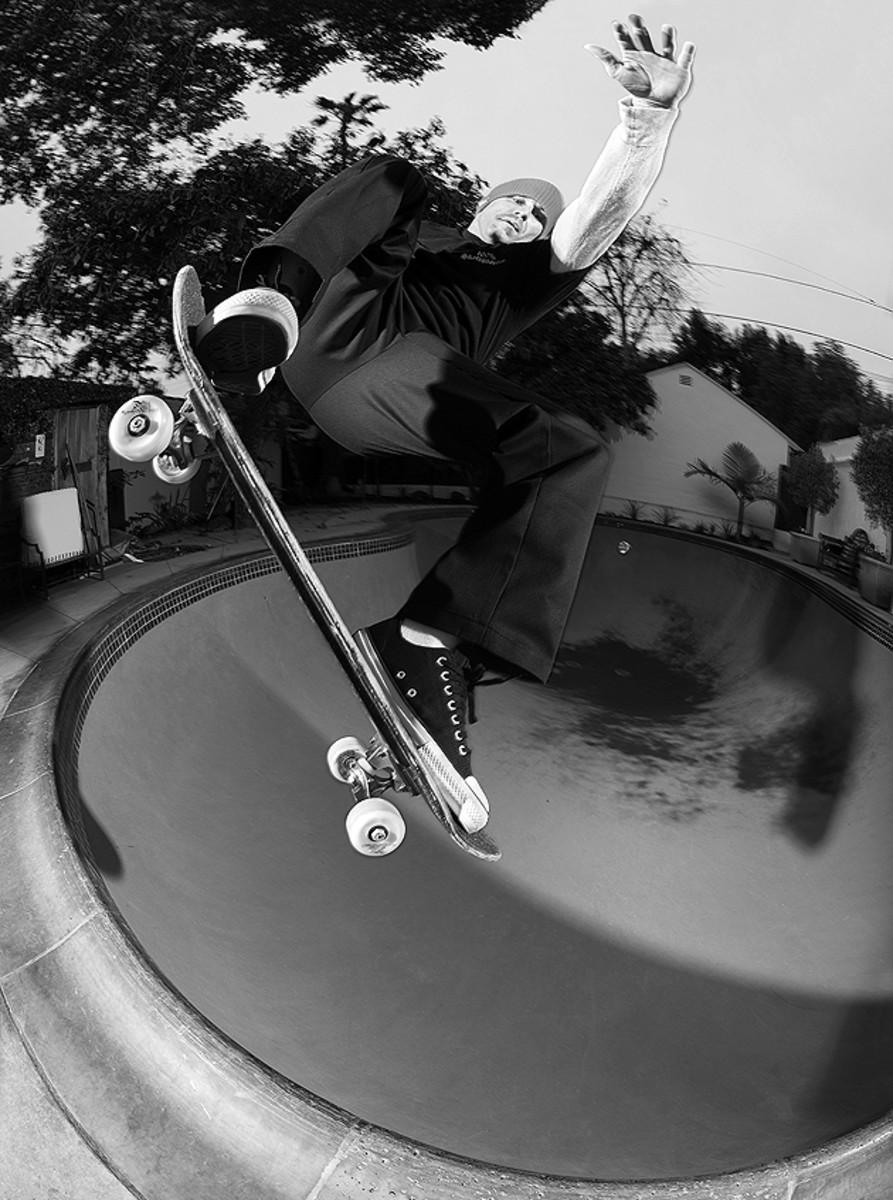Converse infuses rubber for Chuck Taylor-inspired skate shoe

Since the dawn of modern-day skateboarding, the Converse Chuck Taylor All Star has served as the link between skater and board for countless riders. Converse first embraced that link with a Chuck-inspired CONS CTAS Pro technical shoe in 2013. But in 2015 the Boston-based company upped the ante, infusing rubber into the famed canvas for added durability.
“As they are building the shoe, before they sew the upper together they apply a TPU rubber to the back,” Converse designer Adam Brown explains to SI.com. “When you apply it to canvas, it seeps in. As the canvas wears, the rubber meets it halfway and holds the canvas together and makes it more durable.”
From the early days of Converse, before brands were making skate-specific shoes at all, the Chuck Taylor was one of the most popular shoes in the sport. When brands started creating the first-ever skate-specific shoes, Converse was right alongside with their own version.
“Some of the first professional skateboarders, the guys that really developed skateboarding for today and took it from being this thing that was focused on in county fairs as an odd dance-type maneuver and took skateboarding to the street, they were wearing Chucks,” Rodney Rambo, a Converse vice president, tells SI.com. “They were wearing Chucks and doing amazing things.”
Torey Pudwill gets in practice session with Lil Wayne at private Miami park
With history in the culture, as long as Converse has boasted a skate line, they’ve had some version of the Chuck.
“The reason we introduced the Chuck Taylor Pro was we were looking at what everyone was wearing in the skate market and it was the model that everyone gravitated towards,” Brown says. “We wanted to make sure the aesthetic was as close to the regular Chuck Taylor, but added in features that made it better for skateboarding, that made it more durable.”
Those features start from the sole and move up. Now owned by Nike, Converse borrowed Nike’s Lunarlon foam sockliner, a type of lightweight foam designed to disperse impact. “So, when you are doing tricks and jumping down stairs it gets pretty harsh on your feet,” Brown says. “(Lunarlon) disperses the energy out instead of rebounding like an air bag would do.”
To give more durability under the foam, Converse created a different rubber compound for the CTAS Pro. The Cons Traction Rubber plays grippier than traditional Converse rubber. “It looks like normal rubber,” Brown says, “but is actually a different compound. We want to look the same (as a traditional Chuck Taylor), but with hidden details.”

The tongue also received a makeover, going gusseted. Typically used in boots when trying to make them waterproof, the gusseting runs the tongue all the way down to the toe cap. That structure—which incorporates breathable mesh throughout the non-visible portion—adds comfort by eliminating seams and helps keep it straight instead of sliding to one side or the other.
Throughout the technical additions, though, Converse adds “all those technical features on the inside.”
With a variety of long-standing models now adopted for skating, when Converse builds a skate-specific shoe from those silhouettes there is danger in making too many changes.
“Talking to consumers, skate shops, ambassadors, everyone, no one really wanted this to look different than what the Chuck Taylor did,” Brown says. “They didn’t want it padded or puffier. They want it as close to the aesthetic, but with technical features hidden in.”
Because while Converse may want to hide the technical side of design, there’s no hiding Chuck Taylor.
Tim Newcomb covers stadiums, design and gear for Sports Illustrated. Follow him on Twitter at @tdnewcomb.
